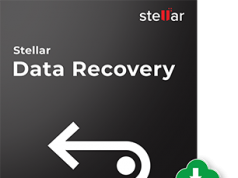In this era of growing business complexity, big data analytics dominating supply chain management has revolutionized its effectiveness by providing an unprecedented degree of tech-driven insights and efficiency. The multifold rise in data sources is an impurity of information that when correctly processed can enhance the various areas of the supply chain.
Big data assists in demand forecasting, inventory control, & distribution processes at strategic decision points. The procurement part of this introductory exploration highlights how big data fundamentally transforms supply chain management process through a multi-attribute approach that enhances agility, strengthens resilience, and ensure competitiveness in modern businesses.
I. Understanding Big Data and Supply Chain Management
Demystifying Big Data:
Big data refers to the massive, complex datasets that are too large and intricate for traditional data processing methods. Its key characteristics include:
- Volume: The sheer amount of data generated by various sources, from social media posts to sensor readings, makes it a challenge to store and manage.
- Variety: Big data comes in many forms, including structured data (databases), unstructured data (text, social media), and semi-structured data (logs, emails).
- Velocity: The speed at which data is generated and needs to be analyzed is constantly increasing, demanding real-time processing capabilities.
The Intricacies of Supply Chain Management:
Supply chain management (SCM) encompasses the entire flow of goods and services, from acquiring raw materials to delivering the final product to the customer. It involves a complex network of activities, including:
- Demand planning: Forecasting customer needs to ensure sufficient stock is available.
- Sourcing: Identifying and managing relationships with suppliers for raw materials and components.
- Production: Manufacturing the product or service according to specifications and quality standards.
- Inventory management: Optimizing stock levels to avoid stockouts or overstocking.
- Logistics: Warehousing, transportation, and delivery of finished goods to customers.
- Returns management: Efficiently handling product returns and replacements.
The Strategic Convergence:
The convergence of big data and SCM represents a strategic shift in how businesses manage their supply chains. By leveraging big data analytics, companies can gain valuable insights from vast amounts of data across the entire supply chain network. This empowers them to make informed decisions that can improve efficiency, transparency, and overall supply chain performance.
II. Enhancing Supply Chain Efficiency through Big Data
Streamlining Operations: A Big Data Makeover
Big data plays a crucial role in streamlining operations in several key areas of SCM:
- Logistics Optimization: Big data analytics can optimize transportation routes, identify cost-saving opportunities, and predict potential delays. By analyzing historical data on traffic patterns, weather conditions, and fuel consumption, companies can create efficient delivery schedules, reducing transportation costs and lead times.
- Inventory Management: Inventory management is a constant balancing act. Big data can help businesses maintain optimal stock levels by analyzing past sales data, seasonality trends, and customer demographics. This enables companies to avoid stockouts that disrupt production or customer satisfaction while minimizing the costs associated with holding excess inventory.
Case Studies: Real-World Examples
Several companies have successfully harnessed the power of big data to achieve significant operational efficiency gains in their supply chains:
- Walmart: The retail giant utilizes big data analytics to predict customer demand and optimize inventory levels across its vast supplier chain network of stores. This has resulted in reduced stockouts, improved product availability for customers, and significant cost savings.
- Amazon: A pioneer in e-commerce, Amazon relies heavily on big data to personalize customer experiences, optimize warehouse operations, and automate order fulfillment processes. This data-driven approach allows Amazon to deliver products quickly and efficiently, contributing to its competitive edge.
Demand Forecasting: Predicting the Future with Data
Predictive analytics, a powerful tool within big data, allows companies to forecast demand with greater accuracy. This involves analyzing historical sales data, customer behavior patterns, and market trends to anticipate future demand for products. By understanding demand more effectively, businesses can optimize production plans, manage inventory levels more efficiently, and avoid potential stockouts.
III. Improving Supply Chain Transparency and Traceability
Seeing is Believing: The Power of Visibility
One of the most significant contributions of big data to supply chain management process is the dramatic improvement in supply chain visibility. By capturing and analyzing data from every step of the supply chain process, big data provides companies with a comprehensive view of their operations. This allows them to track the movement of goods, identify potential issues, and ensure compliance with regulations.
Technology in Action: IoT and Blockchain Take Center Stage
The ability to achieve real-time tracking within a supply chain network relies heavily on two key technologies: the Internet of Things (IoT) and blockchain.
- The Internet of Things (IoT): IoT refers to the network of physical devices embedded with sensors and supply chain software services company that collect and exchange data. In the context of supply chain management, IoT sensors can be attached to raw materials, components, and finished products. These sensors continuously collect data on location, temperature, and other relevant parameters. This real-time data stream allows companies to track the movement of goods throughout the supply chain with unprecedented accuracy. Imagine being able to pinpoint the exact location of a shipment containing critical medical supplies or monitor the temperature of perishable goods during transportation in real-time. IoT makes this possible.
- Blockchain: Blockchain technology offers a secure and transparent way to record and track data across a decentralized supplier chain network. In the context of supply chain management, a blockchain can be used to create an immutable record of every step a product takes from its origin to the final consumer. This record can include information on the source of raw materials, manufacturing processes, and quality control checks. The transparency offered by blockchain can help build trust with consumers who are increasingly interested in the ethical sourcing and sustainability practices of the companies they support.
By combining the real-time data collection capabilities of IoT with the secure and transparent record-keeping of blockchain, companies can achieve a level of supply chain visibility that was previously unimaginable. This allows for:
- Improved Response to Disruptions: Real-time data on delays, quality issues, or other problems can be identified and addressed quickly, minimizing disruption to the overall supply chain.
- Enhanced Collaboration: Supply chain partners can access and share data seamlessly, fostering better collaboration and improved decision-making across the network.
- Reduced Risk of Fraud: Blockchain’s tamper-proof nature helps ensure the authenticity of product information, reducing the risk of counterfeit goods entering the supply chain.
The Impact of Transparency on Consumer Trust and Regulatory Compliance
Increased supply chain transparency has a significant impact on both consumer trust and regulatory compliance:
- Consumer Trust: In today’s world, consumers are increasingly concerned about the provenance and ethical sourcing of the products they purchase. They want to know where their products come from, how they are made, and whether they meet sustainability and ethical labor standards. Supply chain visibility platforms powered by big data can empower consumers to make informed choices by providing detailed information about the journey of a product. This transparency fosters trust and brand loyalty among consumers.
- Regulatory Compliance: Many industries face stringent regulations regarding product safety, quality control, and ethical sourcing practices. Supply chain visibility platforms can provide companies with the data and audit trails necessary to demonstrate compliance with these regulations. This helps to mitigate risk and avoid potential fines or penalties.
Furthermore, increased transparency can lead to:
- Improved Sustainability Practices: By knowing the environmental impact of different suppliers and transportation methods, companies can make informed decisions to reduce their carbon footprint and operate in a more sustainable manner.
- Enhanced Product Recalls: In the event of a product recall, supply chain visibility allows companies to identify affected products quickly and efficiently, minimizing the impact on consumers and brand reputation.
In conclusion, the convergence of big data and supply chain management process is revolutionizing the way businesses operate. By leveraging big data analytics, companies can optimize logistics, predict demand with greater accuracy, and achieve unparalleled supply chain visibility startups. This not only leads to increased efficiency and cost savings but also fosters trust with consumers and ensures compliance with regulations. As big data technologies continue to evolve, we can expect even more transformative advancements in the realm of supply chain management.
Follow technoroll for more!





